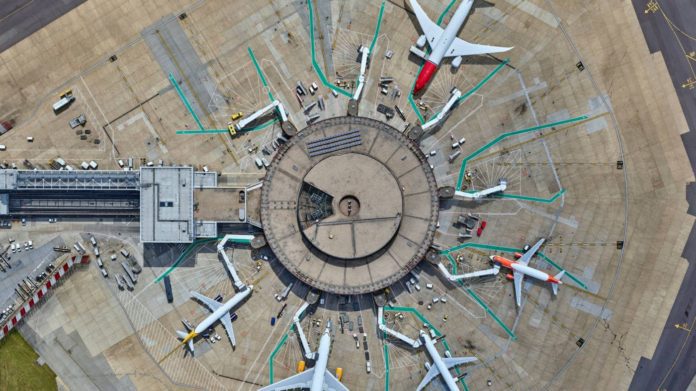Hewlett Packard Enterprise (HPE) has completed a $15 million 18-month overhaul of Gatwick Airport?s IT systems, which it has compared to performing open-heart surgery while the patient is running.
The work has covered the introduction of an ?internet of things? (IoT) network, a 30mbps public Wi-Fi network, new CCTV and IPTV services, passenger flow analytics, and machine learning and facial recognition security technologies.
The challenge was to run the upgrade while the airport, the UK?s second largest after Heathrow, remained operational. The project was completed without any downtime or instability, said HPE; such transitions typically take up to four years.
?Transitioning from old to new networks while keeping the world?s most efficient runway operating is like performing open heart surgery on a patient while he is running,? said HPE UK and Ireland managing director Marc Waters.
?We?re delighted with how smoothly the project has run ? the world?s most efficient single runway now has an equally powerful and productive IT network to match it. This transition will be one of the most impressive to have taken place in recent years ? we?re very proud to have led it.?
The new mesh network, utilising a backbone based on many multiples of 40Gb connections, provides 10 times the number of data links, compared with its ?limited? old IT network, said HPE. The new capacity removes potential bottlenecks and points of failure from the system.
?The network?s capability has been uplifted by such a scale that it now matches that of an internet service provider,? said Gatwick Airport chief information officer Cathal Corcoran.
Capacity has been provided by thousands of terabytes per second of switching capacity, hundreds of VPN instances, tens of multicast VPN, millions of IPv4 address routing capacity, and thousands of 1G ports and hundreds of 10G/40G ports.
HPE has simplified the IT network by reducing nodes and removing STP, it said; its HPE IRF technology has replaced the legacy three-tier design with a flatter network topology.
The airport, which serves around 250 businesses, 30,000 staff and 45 million passengers per year, required a ?more resilient, self-healing, fault tolerant network,? according to HPE. The new HPE network supports its ?vision of an IT infrastructure? for a decade, said Corcoran.
IoT sensors have been installed to monitor waste bins, check-in desks, table availability and pond water levels. In addition, the Wi-Fi network offers download speeds of 30mbps, passenger flow can be monitored based on smart phone locations and heat maps, high definition CCTV and IPTV systems are available to security, and machine learning and facial recognition is available to gate staff.
HPE?s IT services arm Pointnext will manage the network.

